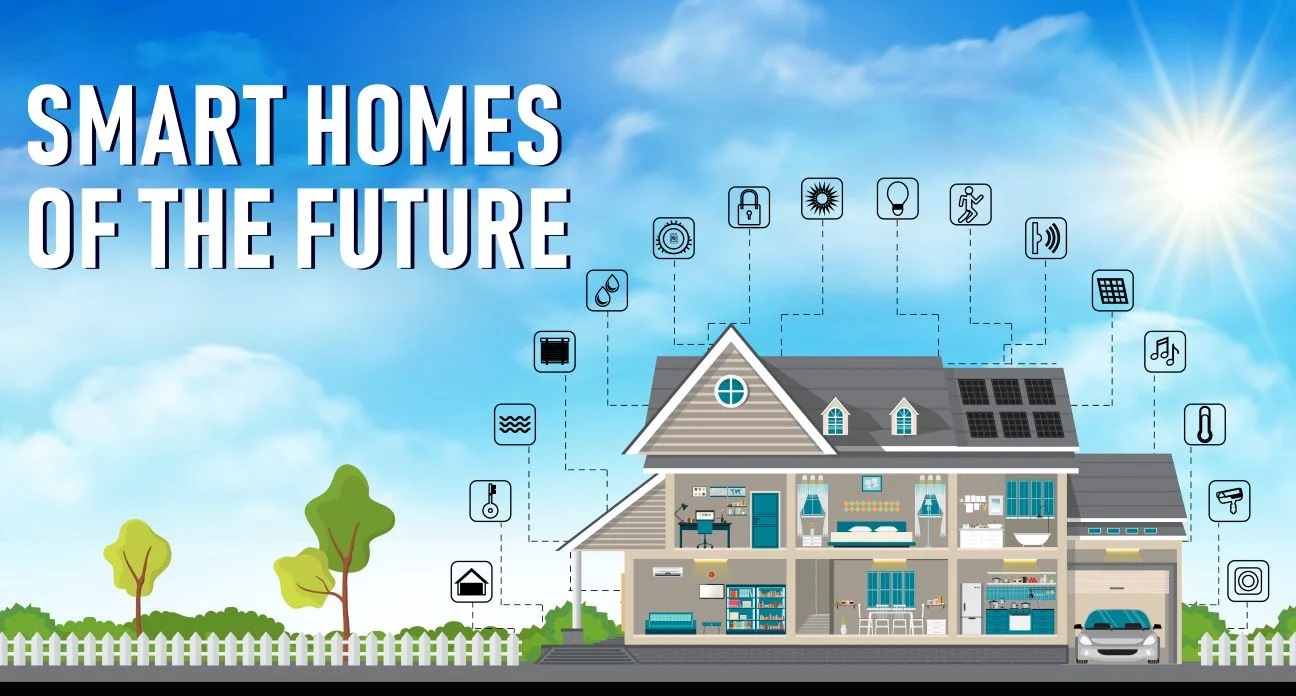Introduction
Smart homes are evolving rapidly, transforming the way we live by integrating advanced technologies such as artificial intelligence (AI), Internet of Things (IoT), and automation. These innovations enhance convenience, security, energy efficiency, and overall home management.
In this article, we will explore the future of smart homes, key advancements, benefits, challenges, and what to expect in the coming years.
Why Smart Homes Are the Future
Smart homes are gaining popularity due to several compelling reasons:
- Increased Convenience: AI-powered assistants and automation streamline daily tasks.
- Enhanced Security: Smart security systems offer real-time monitoring and alerts.
- Energy Efficiency: Smart thermostats and lighting reduce energy consumption.
- Improved Connectivity: IoT devices ensure seamless communication between appliances.
- Health and Wellness Benefits: Smart sensors monitor air quality, sleep patterns, and fitness.
Key Innovations in Smart Homes
1. AI-Powered Virtual Assistants
- Best For: Home automation, voice control, and personalized experiences.
- Key Features:
- Voice-controlled home management (Alexa, Google Assistant, Siri).
- AI-driven personalization based on user habits.
- Smart reminders and scheduling.
- Use Cases: Hands-free control, automation of home routines, smart device integration.
2. Smart Security Systems
- Best For: Home protection and real-time monitoring.
- Key Features:
- AI-driven facial recognition and motion detection.
- Remote access to security cameras and locks.
- Automated emergency alerts.
- Use Cases: Preventing break-ins, monitoring visitors, child and pet safety.
3. IoT-Connected Appliances
- Best For: Making everyday home tasks more efficient.
- Key Features:
- Smart refrigerators tracking grocery inventory.
- AI-powered washing machines optimizing detergent use.
- Automated coffee makers syncing with morning alarms.
- Use Cases: Simplifying household chores and reducing waste.
4. Energy-Efficient Smart Devices
- Best For: Reducing electricity and water bills.
- Key Features:
- Smart thermostats learning and adjusting temperatures automatically.
- Smart lighting systems adjusting brightness based on occupancy.
- Solar-powered smart homes with energy management systems.
- Use Cases: Cost savings, environmental sustainability, optimized energy consumption.
5. Smart Health & Wellness Devices
- Best For: Monitoring and improving well-being.
- Key Features:
- AI-driven air purifiers enhancing air quality.
- Smart mattresses tracking sleep patterns.
- Wearable health monitors syncing with smart home systems.
- Use Cases: Enhancing sleep, air quality, and overall health monitoring.
6. Home Automation & Robotics
- Best For: Automating daily household tasks.
- Key Features:
- AI-powered vacuum cleaners mapping and cleaning efficiently.
- Smart lawnmowers managing garden maintenance.
- Robotic kitchen assistants preparing meals.
- Use Cases: Saving time, reducing effort, and enhancing home maintenance.
7. Smart Entertainment Systems
- Best For: Enhancing home entertainment experiences.
- Key Features:
- AI-driven content recommendations for streaming services.
- Voice-controlled smart TVs and speakers.
- Multi-room audio systems syncing seamlessly.
- Use Cases: Personalized entertainment, improved sound and visual experiences.
8. Advanced Home Networking
- Best For: Ensuring seamless internet connectivity.
- Key Features:
- AI-optimized Wi-Fi networks improving connectivity.
- Smart routers prioritizing bandwidth for streaming and work.
- Mesh network systems reducing dead zones.
- Use Cases: Faster and more reliable internet access.
9. Smart Home Office Solutions
- Best For: Enhancing productivity for remote workers.
- Key Features:
- AI-powered lighting and sound control.
- Smart desks adjusting height based on posture.
- Noise-canceling smart speakers for focused work.
- Use Cases: Creating an optimized workspace for remote professionals.
10. Sustainable Smart Homes
- Best For: Environmentally conscious homeowners.
- Key Features:
- AI-driven water conservation systems.
- Solar-powered energy management and storage.
- Smart recycling bins sorting waste automatically.
- Use Cases: Reducing carbon footprints and promoting sustainability.
Challenges in Smart Home Adoption
While smart homes offer numerous benefits, there are challenges to consider:
- High Initial Costs: Smart home technology can be expensive.
- Privacy Concerns: Data security risks and potential hacking threats.
- Interoperability Issues: Not all smart devices work seamlessly together.
- Technical Complexity: Some users find smart home setups difficult to manage.
- Dependency on Internet Connectivity: Many smart devices require a stable connection.
The Future of Smart Homes
Smart homes will continue to evolve with new advancements, including:
- AI-Powered Predictive Automation: Homes will anticipate and adjust settings based on user behavior.
- 5G-Enabled Smart Homes: Faster, more reliable connectivity for all devices.
- Edge Computing in Smart Homes: Reducing latency and enhancing security.
- Integration with Smart Cities: Seamless connectivity between homes and urban infrastructure.
- Voice & Gesture Recognition: More intuitive interaction with smart devices.
Conclusion
Smart homes are no longer a futuristic concept—they are becoming a reality. AI, IoT, and automation are revolutionizing home life by enhancing security, efficiency, and convenience. While challenges exist, ongoing innovations will make smart homes more accessible and integrated into our daily lives.
Embracing smart home technology can lead to a more comfortable, efficient, and secure living experience, shaping the future of modern homes.
